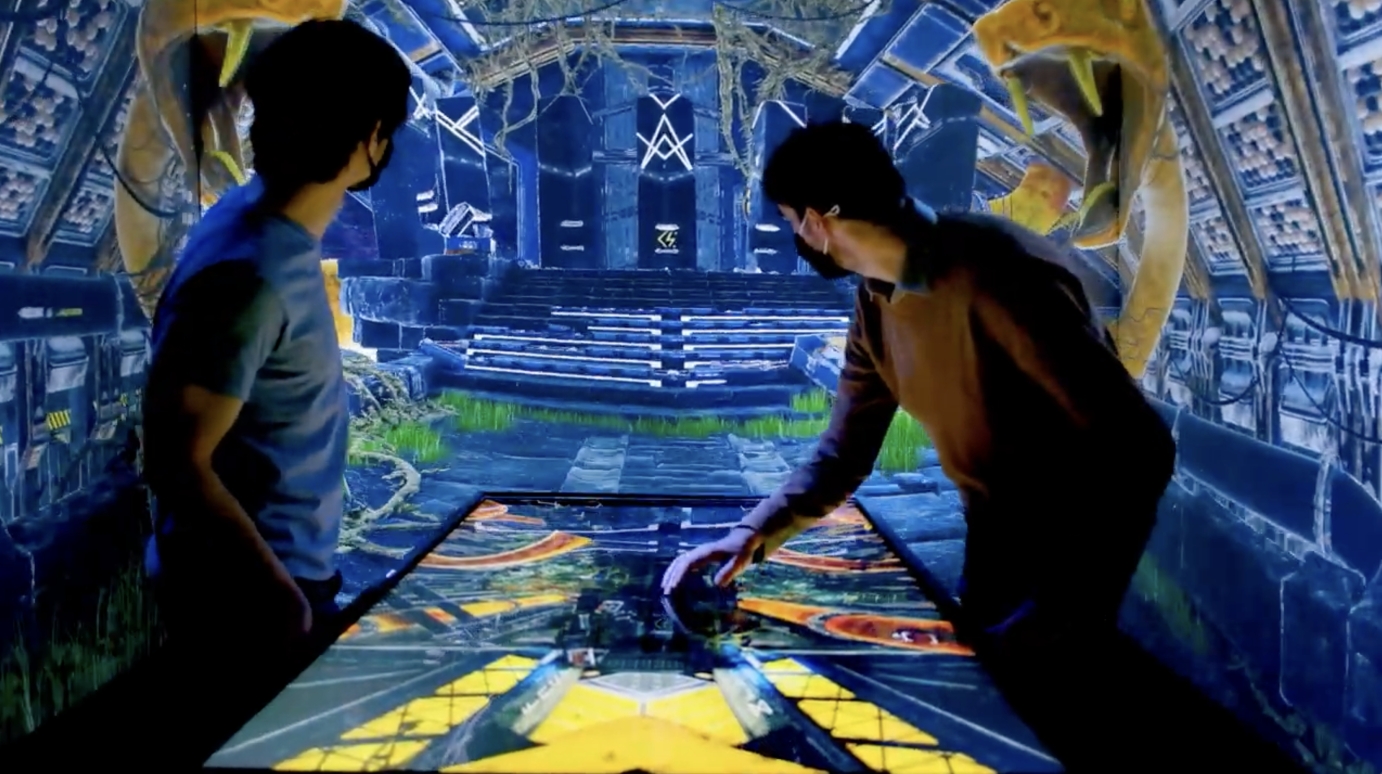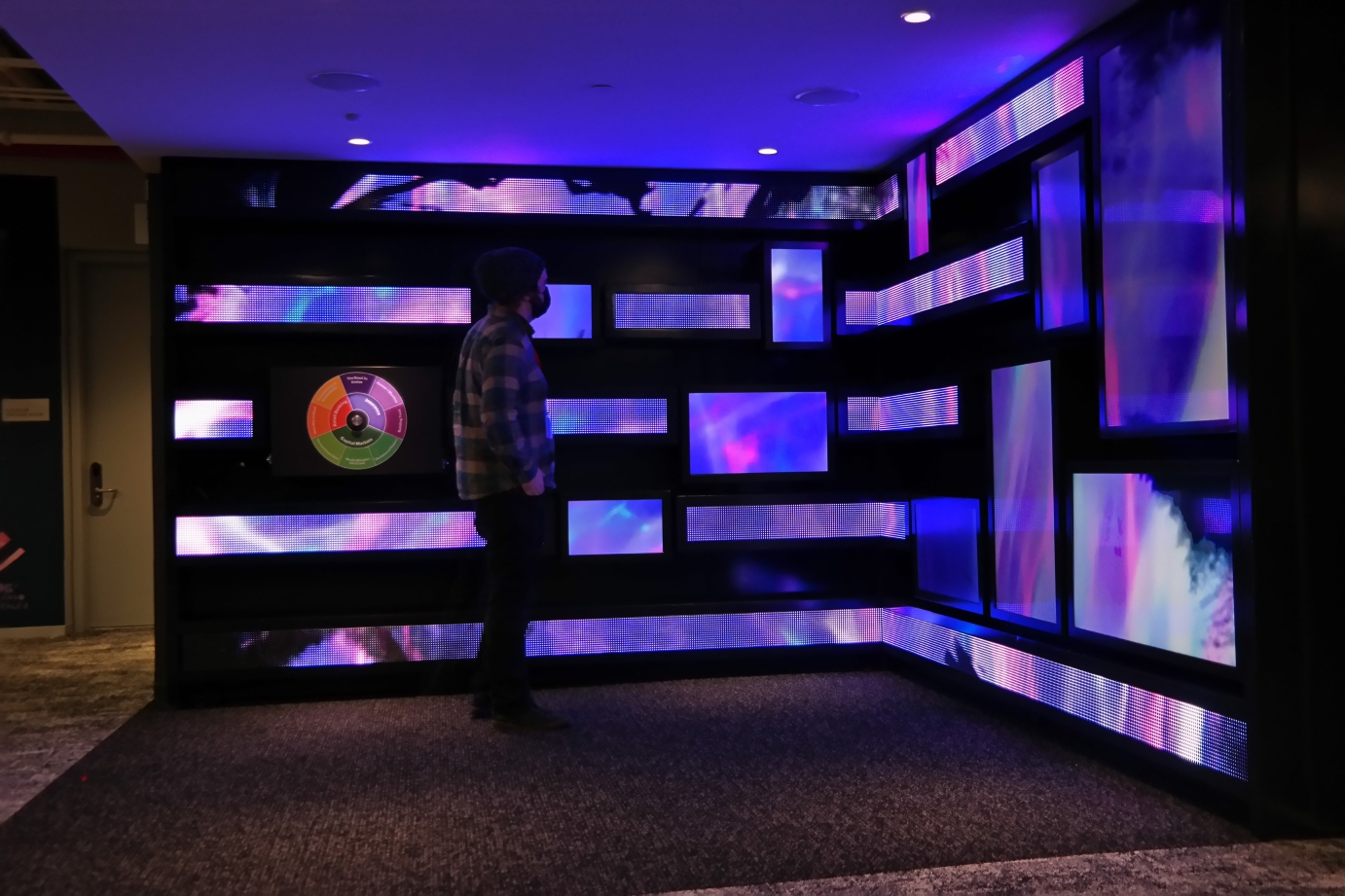
As an Immersive Experiential Design Agency, it's par for the course to utilize cutting-edge tools and techniques as often as possible. It's one of the reasons clients choose Future Colossal over other agencies. We make the impossible possible; cutting-edge research and development is in our blood, and with that comes an endless and intense curiosity. Because we classify ourselves as an Innovation Agency above all else, we make it a point to implement as many new tools as possible, both for client projects and for internal RnD sprints. The upsurge in Generative AI has given us a playing field almost unlike any other.

Applied AI has been used in an assortment of ways in experiential design and immersive entertainment for years, utilizing computer vision, natural language processing, etc. In just this last year, however, a newer application of Generative AI has blossomed. Agencies like us, who have a history of utilizing AI in many ways (from people tracking to voice recognition), are in a terrific position to be at the forefront of the research and development of the real-world applications of these cutting-edge Generative AI systems. With new techniques and generative systems being released every week, closed-source papers being cloned and released open source within days of publication, and billions of venture capital being dumped into the space, it's incredibly hard to stay relevant.
One of the ways that Future Colossal has applied Generative AI internally is by fully integrating it in every step of the Concepting phase. We utilize ChatGPT to help brainstorm everything from Interactive Installations to Mixed Reality Experiences, working collaboratively across departments to ensure visual and textual consistency throughout the process. There's no copy and pasting; there's a collaborative workflow between an agile team and a Generative AI workflow. At its root, this allows us to amplify production speed, create new opportunities, decrease design department workloads, and deliver terrific proposals in record time.


An example of us pushing the bounds of the cutting edge, is our use of Stable Diffusion to create near-Realtime immersive Mixed Reality content. By using command line communication through Unity or Touch Designer, we’re able to feed user created image prompts into an immersive projection mapped room. By utilizing shaders and frame interpolation, we’re able to create the illusion of Real-time Ai generated video content in 4k, split across the walls of a room. To create such a workflow, you can’t just use Stable Diffusion to get what you want, you have to pick and choose features and functions that work for the specific use-case. We’ve spent months on creating an integrated user responsive AI framework that can be dragged and dropped into whatever use-case has need for near-live reactive visuals!
If you're an immersive experience design agency, a creative technology agency, an immersive retail agency, an experiential advertising agency, or any of the various types of agencies that work within this industry, it's worth exploring the implementation of Generative AI workflows as a daily facet of agency life. Creating early workflow systems that utilize the newest available AI systems and algorithms doesn't just benefit you as an agency or employee, it actively helps the entire Generative AI space and industry. Every use-case with real-world impact and a true feeling of delight inspires other agencies, artists, and the general public to explore these very same systems. Hell, ChatGPT hit one million users in 5 days. In a single week ChatGPT proved that a good use-case can draw significant attention and reach a record setting audience.
Lev Manovich said it best in his 2017 article titled "Visual Semiotics, Media Theory, and Cultural Analytics":
“While artists continued to rely on them, in culture industries painting, drawing, photo editing, creation of 3D objects and environments, graphic design, media design, and sound editing were now carried out with software tools such as Photoshop and After Effects from Adobe, Apple’s Final Cut, Autodesk Maya, Microsoft Office, and Avid’s Pro Tools. How do these tools shape the aesthetics of contemporary media and design? What happens to the idea of a “medium” after previously media-specific tools have been simulated and extended into software? Is it still meaningful to talk about different mediums at all? What was the thinking and motivations of people who in the 1960 and 1970s created concepts and practical techniques that underlie contemporary media software? “
The very act of engaging with applied Ai/Generative AI will impact users in the same way that Photoshop and 3D software tools like Autodesk Maya did when they first hit the market. Generative AI opens eyes regarding the availability of new mediums and new ways to explore immersion and imagination; instead of closing opportunities, it unlocks countless undiscovered potentials.

